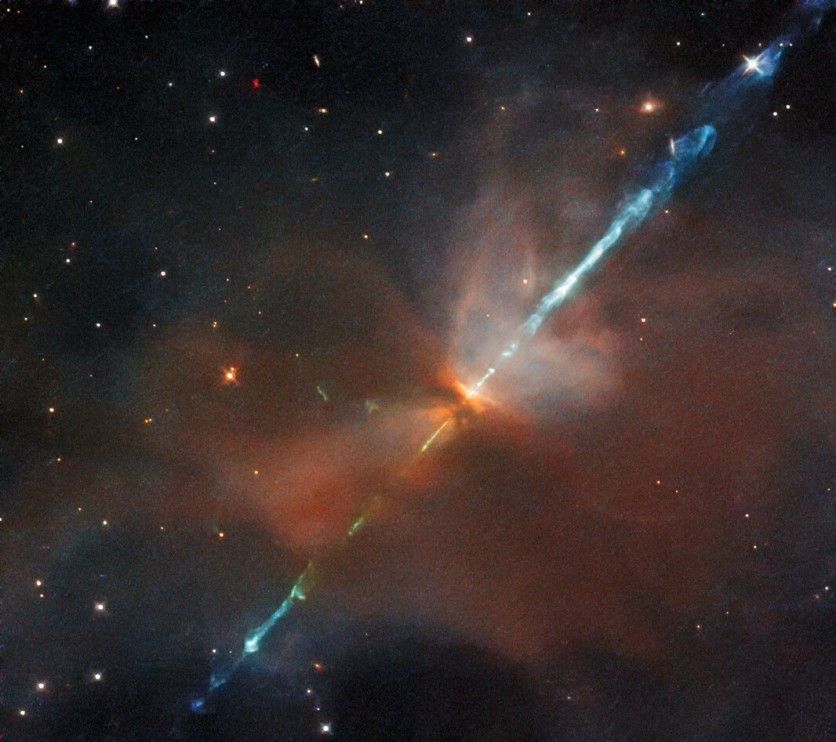The Hubble Space Telescope has taken a photo of an uncommon space phenomenon known as the Herbig-Haro object.
The photo, which has been released by the European Space Agency (ESA), features a Herbig-Haro object named HH111. HH111 is located 1,300 light-years away from our planet.
The photo shows what can be described as a blue "sword" that is piercing a heart-shaped cloud of dust and gas.
Hubble Space Telescope Snaps Photo of Herbig-Haro Object

The Hubble Space Telescope's photo of a Herbig-Haro object known as HH111 has been released by the ESA.
The photo of the HH111 was taken using the Hubble Space Telescope's Wide Field Camera 3, which has snapped countless photos of many other space phenomena and objects in the past.
According to a report by Space, the photo shows "a flaming blue sword seems to pierce a giant cosmic heart."
The report adds, "The 'sword' is composed of twin jets of superheated, ionized gas that are rocketing into space from opposite poles of a newborn star called IRAS 05491+0247."
The "heart," on the other hand, is actually a cloud of leftover dust and gas that is surrounding the newborn star.
What is a Herbig-Haro Object?
The Herbig-Haro object is a space phenomenon "formed when young stars eject jets of material back into interstellar space," according to the National Aeronautics and Space Administration's (NASA) Hubblesite.
According to the ESA, as quoted in the report by Space, "Herbig-Haro objects actually release a lot of light at optical wavelengths, but they are difficult to observe because their surrounding dust and gas absorb much of the visible light."
HH111, the Herbig-Haro object the Hubble Space Telescope recently took a photo of, is located in the constellation Orion. In terms of distance, the HH111 is located 1,300 light-years away from Earth.
The Hubble Space Telescope's Wide Field Camera 3 has the capacity to observe infrared wavelengths, which has made it possible to observe Herbig-Haro objects.
Another example of a Herbig-Haro object is the HH30, which the Hubble Space Telescope was able to snap a photo of in an image of the constellation Taurus it had taken in 2014. The HH30 is associated with a star known as the V1213 Tauri.
Related Article: Hubble Captures Dramatic New Image of Taurus Constellation
The Hubble Space Telescope
The 31-year-old Hubble Space Telescope, which was named after astronomer Erwin Hubble, was deployed in 1990 by a space shuttle called Discovery. The space telescope was actually launched to low Earth orbit instead of far out into outer space.
The Hubble Space Telescope has since snapped countless photos of numerous space objects and phenomena, including stars, galaxies, black holes, nebulae, and many more.
For example, a recent article published here on Tech Times contains photos of some of the galaxies that the Hubble Space Telescope has taken through the years.
Read also: IN PHOTOS: Hubble Space Telescope's Snaps Breathtaking Photos of Nebulae - What is a Nebula Anyway?
This article is owned by Tech Times
Written by Isabella James
ⓒ 2025 TECHTIMES.com All rights reserved. Do not reproduce without permission.




